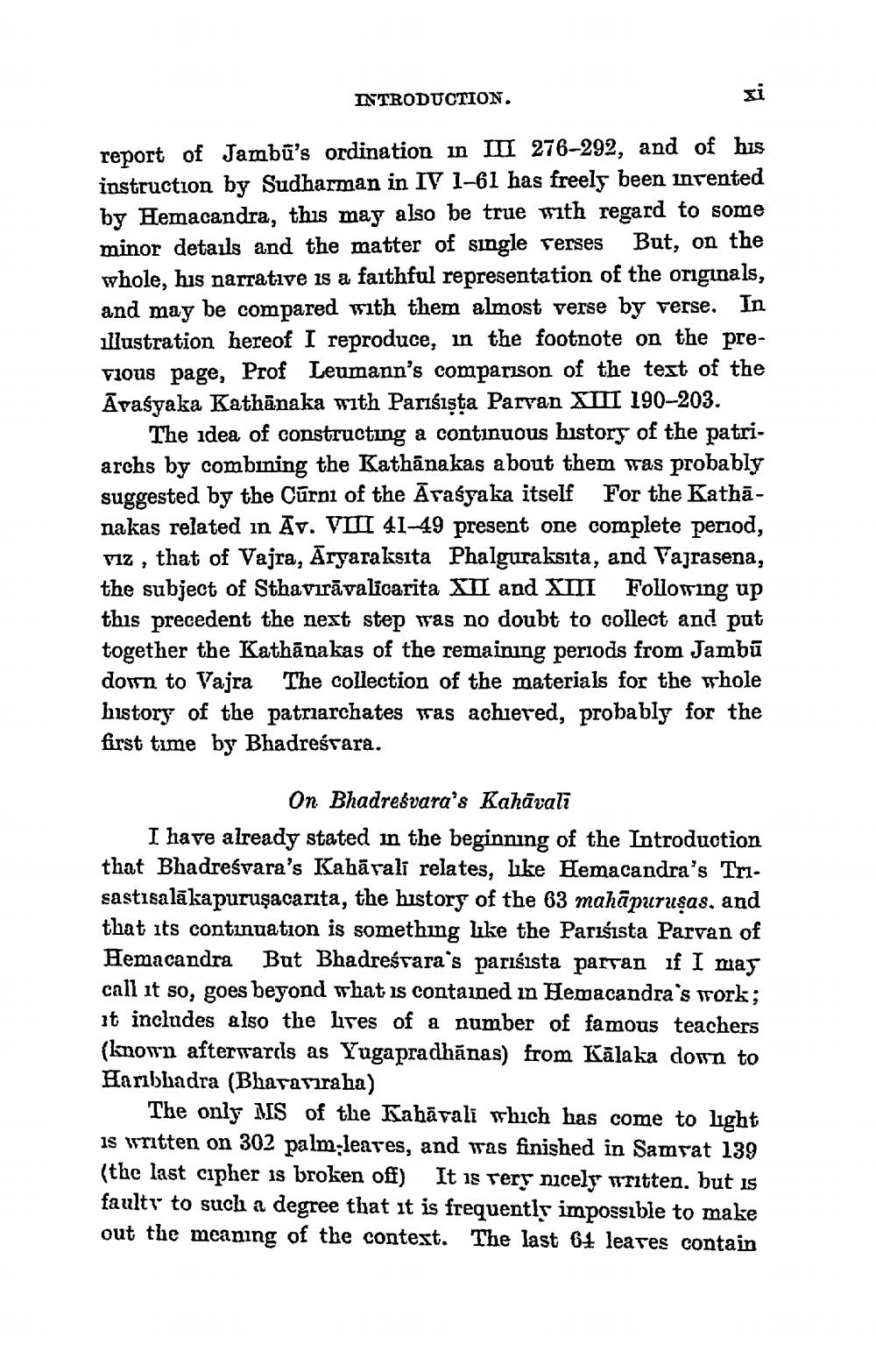________________
INTRODUCTION.
report of Jambű's ordination in IIL 276-292, and of his instruction by Sudharman in IV 1-61 has freely been invented by Hemacandra, this may also be true with regard to some minor details and the matter of single verses But, on the whole, his narrative is a faithful representation of the originals, and may be compared with them almost verse by verse. In illustration hereof I reproduce, in the footnote on the previous page, Prof Leumann's comparison of the test of the Āvašyaka Kathānaka with Parıśışta Parvan XIII 190–203.
The idea of constructing a continuous history of the patriarchs by combining the Kathānakas about them was probably suggested by the Cūrni of the Āraśyaka itself For the Kathānakas related in Av. VIII 41-49 present one complete period, viz , that of Vajra, Aryaraksta Phalguraksita, and Vajrasena, the subject of Sthavirāvalicarita XII and XIII Following up this precedent the next step ras no doubt to collect and put together the Kathānakas of the remaining periods from Jambu dorn to Vajra The collection of the materials for the whole history of the patriarchates was achiered, probably for the first time by Bhadreśrara.
On Bhadreśvara’s Kahārali I have already stated in the beginning of the Introduction that Bhadreśvara's Kahārali relates, like Hemacandra's Trisastısalākapuruşacarita, the history of the 63 mahāpuruşas, and that its continuation is something like the Parıśısta Parvan of Hemacandra But Bhadreśvara's parisista parran if I may call it so, goes beyond what is contained in Hemacandra's work; it includes also the lives of a number of famous teachers (known afterwards as Yugapradhānas) from Kālaka down to Haribhadra (Bhagaviraha)
The only MS of the Kahārali which has come to light is written on 302 palm-leares, and was finished in Samrat 139 (the last cipher is broken off) It is very nicely written, but is faultr to such a degree that it is frequently impossible to make out the meaning of the contest. The last 64 leares contain




